As an owner, you the impact your restaurant design has on its success. While many restaurants feature stunning interiors and furniture, restaurant exterior design often takes a backseat. Your restaurant exterior has a huge potential to attract new customers. After all, it gives a glimpse of the dining experience your guests can expect in your restaurant. An intriguing, inviting restaurant entrance gives your business a positive perception, helps build a brand image and makes it stand out from the competition.
What are Modern Restaurant Exterior Design Ideas?
Just like designing the restaurant interior, there is no single solution to successful restaurant exterior design. However, here are a few factors to consider while designing your restaurant entrance to attract new customers:
1. Identify Where Your Customers Are Coming From?
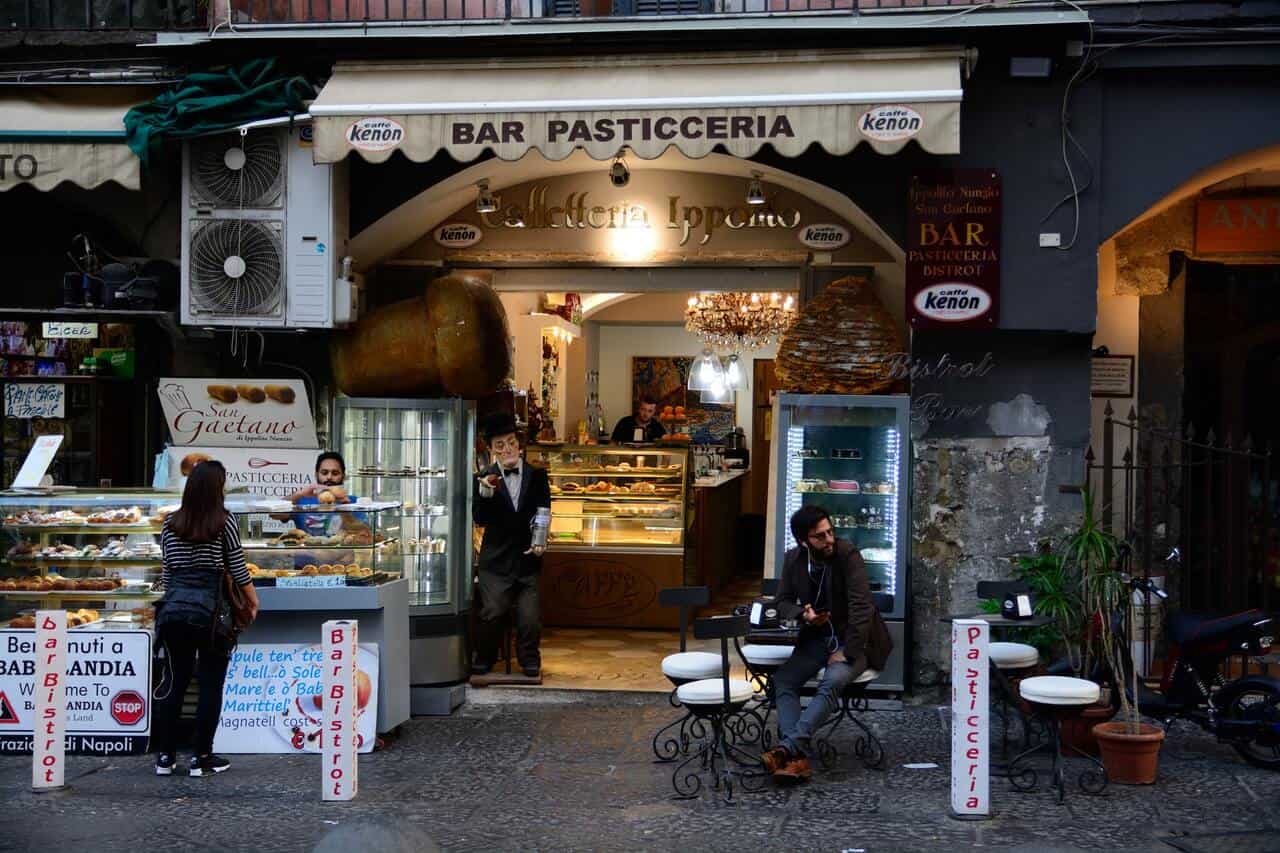
As obvious as it might sound, you must know your target clients. Who are your guests? How are they reaching your restaurant? You must answer these questions before designing your restaurant exterior. Did you know restaurant entrance design depends on whether your customers arrive by foot, car, or public transportation? For example, if your guests come by car or foot, it means that they may already be aware of your restaurant and have planned their visit, in which case, your restaurant entrance may not be critical. On the other hand, if your restaurant is accessible by public transport and located in a busy area with a lot of foot traffic, you need a visually stunning entrance to set you apart from your competitors and lure new guests.
2. Glass vs. Class
Whether a posh home or an upscale office, glass has been traditionally used to showcase opulence. However, this perception changes for restaurants as most guests prefer dining in private. Therefore, most restaurants consider glass a downscale material and use it only for coffee shops, fast food joints, etc. If yours is such a restaurant, then you can go with a glass entrance. However, make sure to keep it spotless by cleaning it daily. Also, since your guests will be able to peek inside, maintain the same class and visual appeal in the interior as well.
On the other hand, if yours is an upscale, fine-dine restaurant, create a luxury restaurant exterior using wooden doors with small windows. Similarly, if you have an industrial theme in your restaurant, you can use metal doors to complement the design.
3. Decorating Entrance
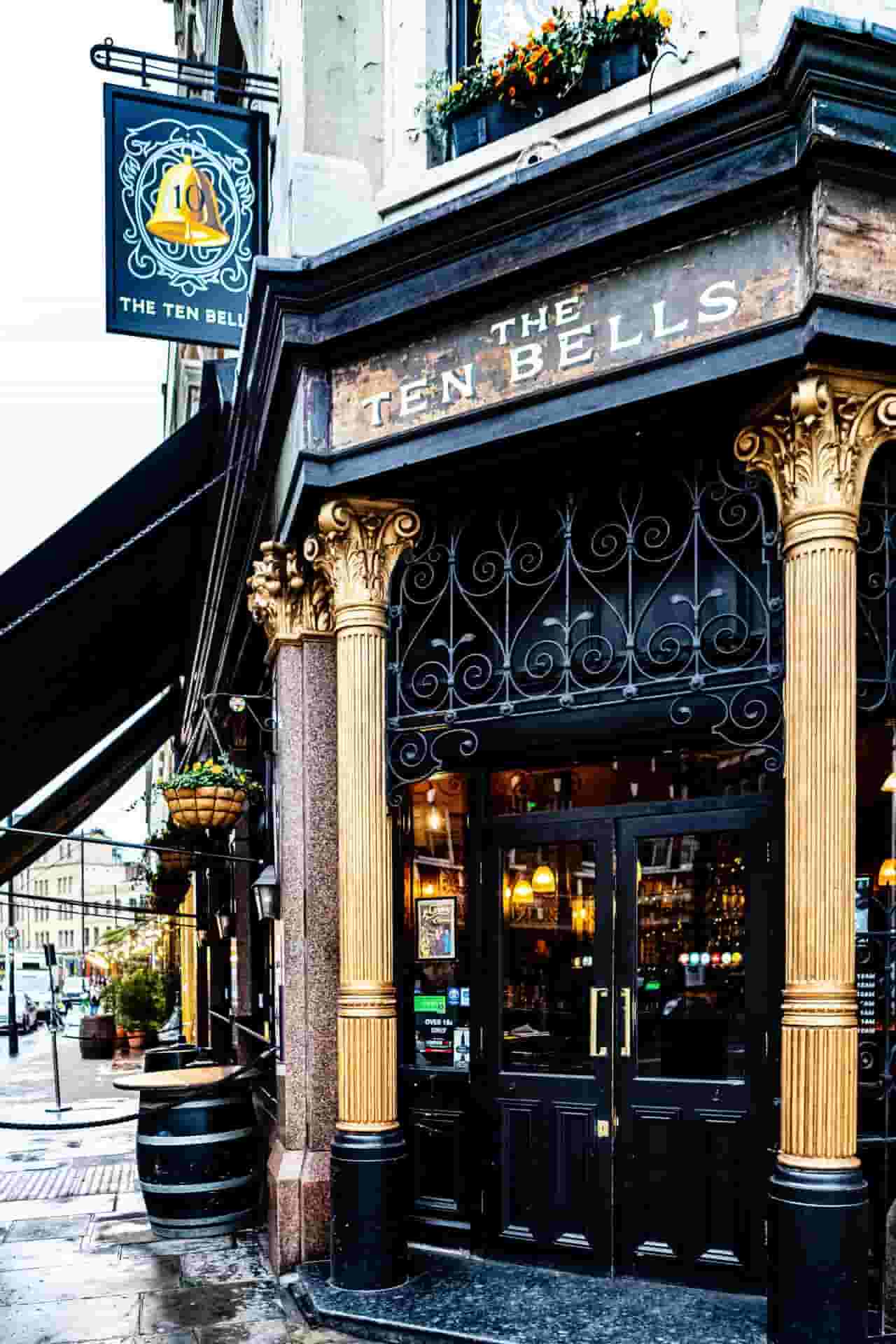
Next comes the decoration of the doorway. Plantings, awnings, canopies, etc., are a smart way to jazz up your restaurant entrance without splurging. Here are some innovative ways to construct an inviting entrance for your restaurant:
- Colorful pavement tiles help entice the passerby and make your restaurant stand out from the surrounding establishments.
- Organic, wooden display boards or barrels create an earthy theme amidst the natural setting.
- If you have a front sidewalk or patio, you can place some tables for diners and to attract passersby with the view of your diners and menu.
4. Keeping Up Appearances
A vibrant, appealing, modern appearance gives an edge to your restaurant. Here are a few elements that can elevate the look and feel of your restaurant’s exterior to a whole new level:
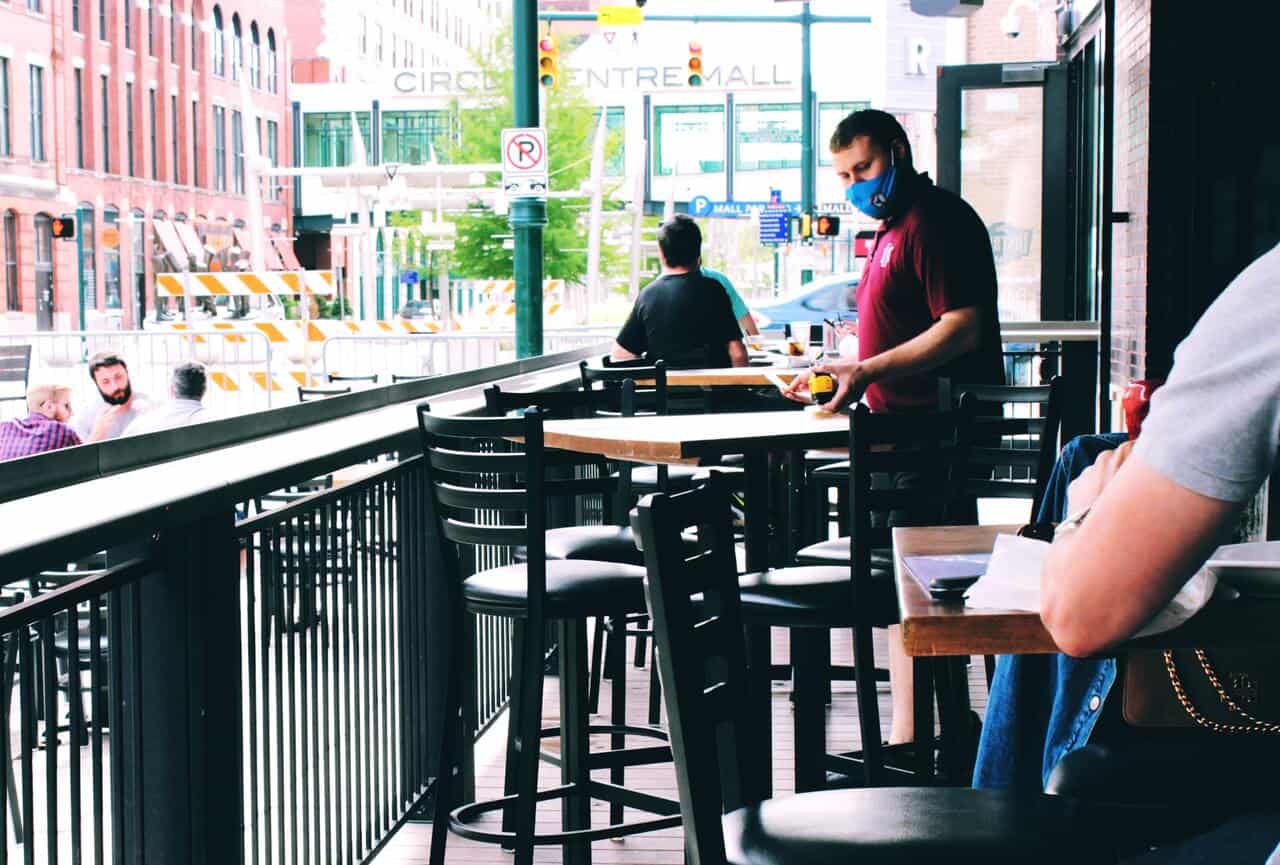
- Outdoor Seating: In the post-Covid-19 era, outdoor seating is witnessing unparalleled popularity from restaurant owners and guests alike. Whether it is your back patio, or front sidewalk, balcony, or roof-top, having outdoor seating can significantly boost your business.
- Invest in Outdoor Lighting: When it comes to outdoor lighting, you have endless options. Bright, saturated colors are perfect for casual restaurants. If yours is a fine dining restaurant, consider warm, dim lighting for an intimate setup. From fairy lights to tea lights, from lanterns to string lights, you can select from several options per your concept.
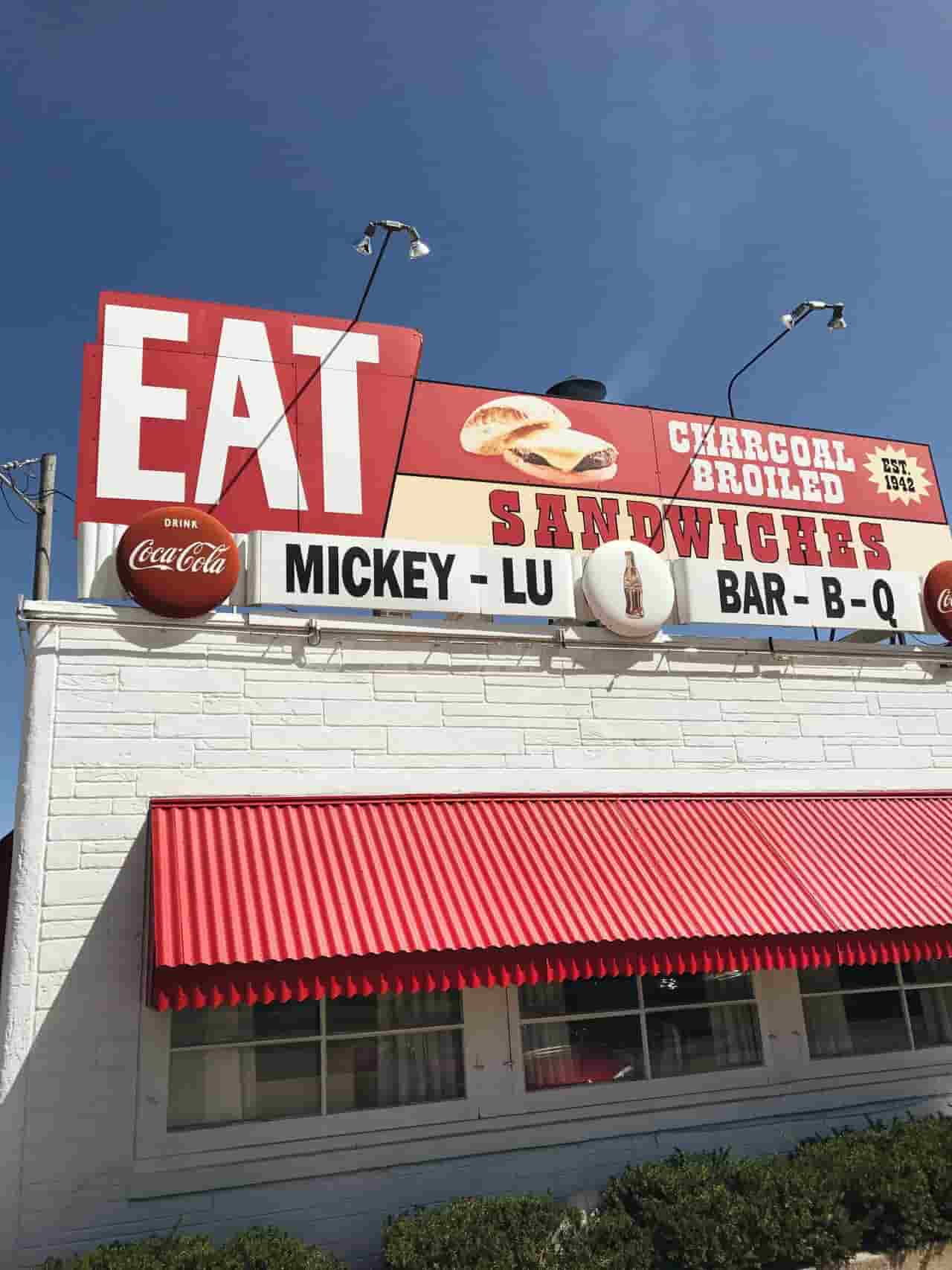
- Signage and Awnings: Signage and awnings are often overlooked and rarely designed properly. For example, did you know the font used on the signage says a lot about your restaurant? For example, mixing different fonts or selecting the wrong font can confuse your guests. Similarly, awnings add to the visibility and enhance the overall aesthetic appeal of your restaurant. Apart from the awning design and material, pay attention to the color psychology as well. While red, being an energetic color, is the go-to choice for many restaurants, green reflects hygiene and is another popular choice in the food and beverage industry.
- Menu Boards: Menu boards help restaurant owners engage their guests and upsell. An appealing menu board not only helps create an integrated experience for your guests but can be a successful branding and marketing strategy as well. You can adopt a digital menu with unlimited design options to create an intriguing brand image and experience.
What Are The Benefits Of Exterior Restaurant Design?
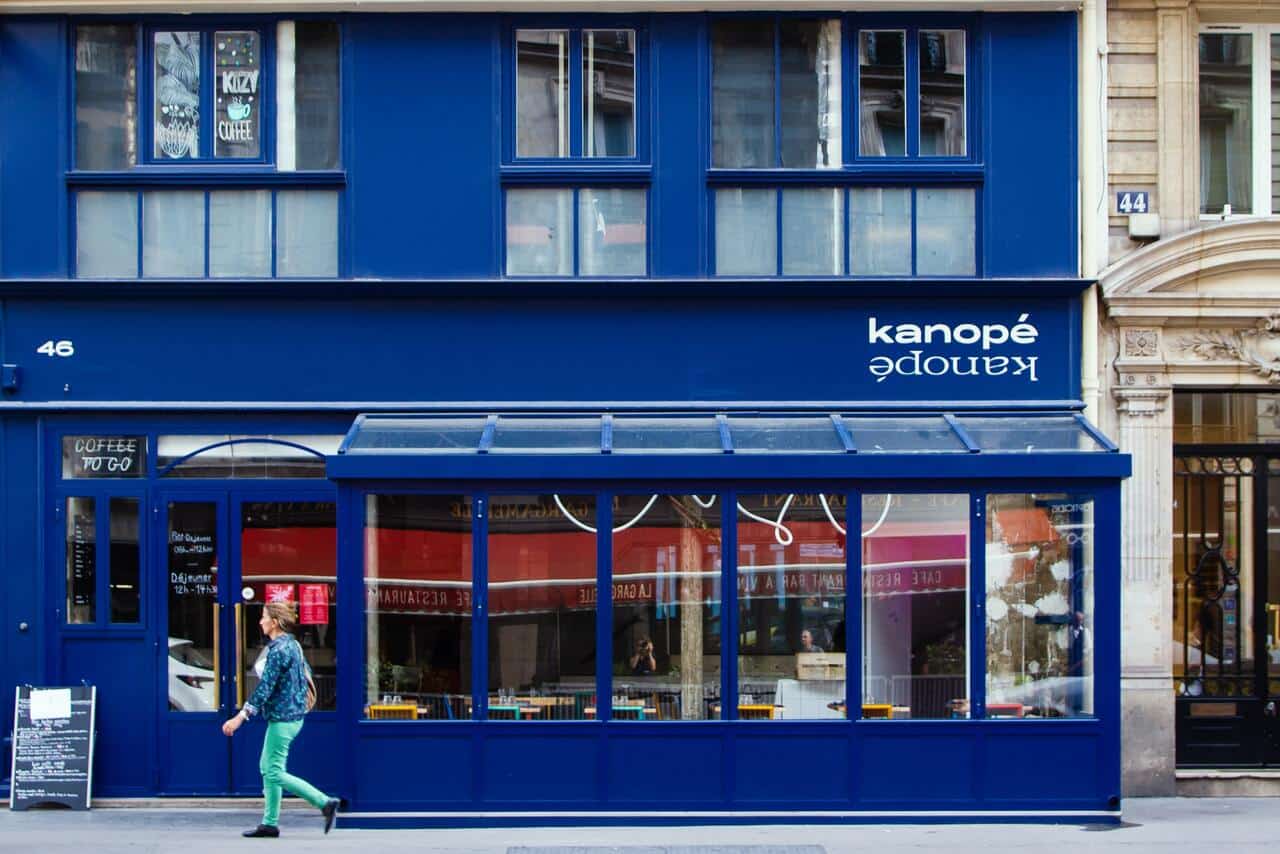
Apart from giving your restaurant a unique makeover, an appealing exterior restaurant design offers the following functions and advantages:
- Attracts new customers and increases foot traffic in your restaurant.
- Shares your concept and creates a brand image for the passerby.
- Sets a festive tone to increase seasonal sales, especially if your restaurant has outdoor seating.
- Gives your restaurant a curb appeal by setting an expectation on the role of your business in the neighborhood.
- Becomes a deciding factor for your potential customers to dine in your restaurant.
What Should You Know About The Exterior Restaurant Design?
Restaurant design, whether interior or exterior, is all about experimenting and trying new, fun things. However, as you might have noticed by now, there are so many elements and considerations for restaurant exterior design. So how do you come up with practical solutions with going overboard or burning a hole in your pockets? Well, here are a few things to ask:
- Is your design choice practical?
- Does your design fall in line with your business proposal or plan?
- Are you compromising on functionality by adding aesthetics?
- Does your design improve the dining experience of your guests?
- Is your design confusing?
- Are you just copying a concept from a competitor?
What Is The Best Color For Restaurant Exterior?
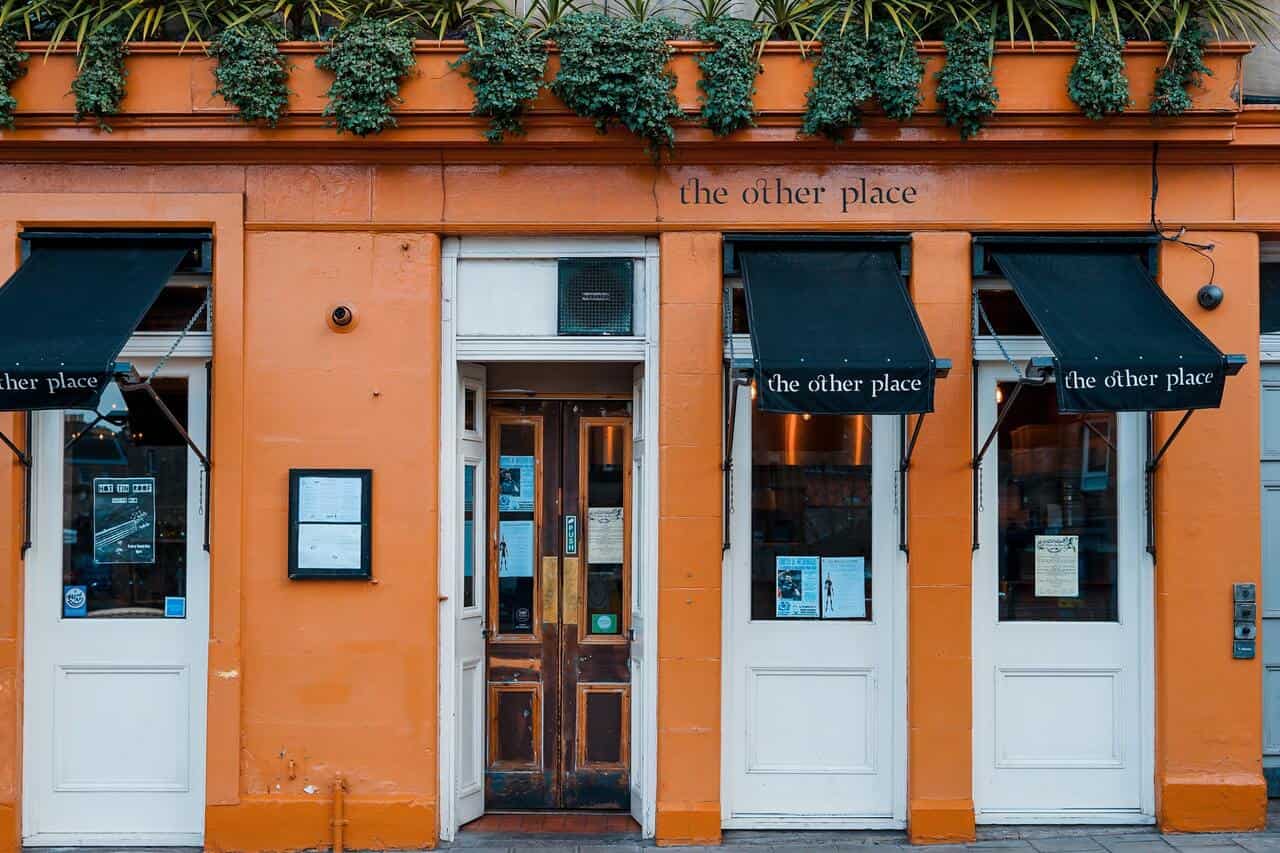
Selecting the proper color for your restaurant exterior is never random or arbitrary. It requires careful deliberation as your restaurant’s perception, success, and your guest’s dining experience depend on the colors you choose. Every color has its own psychology and uniquely influences your guests. Here are some examples of how to create an inviting restaurant exterior for your guests with colors:
- Warm colors like orange, yellow, or red positively impact the appetite of your guests. Red, in particular, helps create a luxurious and inviting atmosphere and encourages impulsive eating.
- Brighter hues instill a sense of urgency and are useful for high table turnovers in fast food joints.
- The green color reflects hygiene and sustainability. Green accents in restaurants reflect healthy menu choices and a natural setting.
- Since natural foods are seldom available in blue or purple, avoid using these colors in your restaurant.
- Dark colors like brown and black highlight sophistication and are perfect for high-end and fine dining restaurants.
- Gray, light brown, and beige are neutral colors that create a warm theme and emphasize your restaurant’s food and service.
- White, although difficult to maintain, showcases minimalism and cleanliness.
Designing a stunning exterior can be the next best thing for your restaurant, financially and visually. It entices your potential customers and gives your restaurant an edge over your competitors. This article discusses some crucial elements of restaurant exterior design and how you can gain from them. Additionally, it highlights how a well-designed restaurant exterior can conquer the psyche of your potential guests. Hopefully, by taking notes from these points, you will be able to create a stunning restaurant exterior that attracts new customers and boosts your sales.

